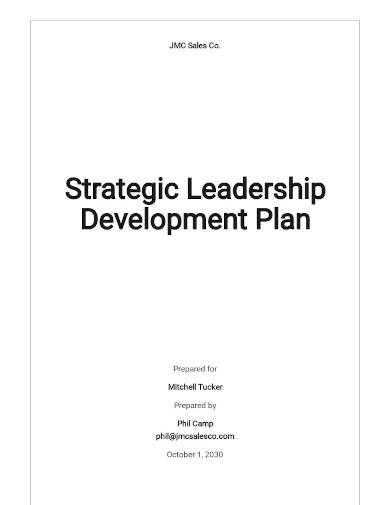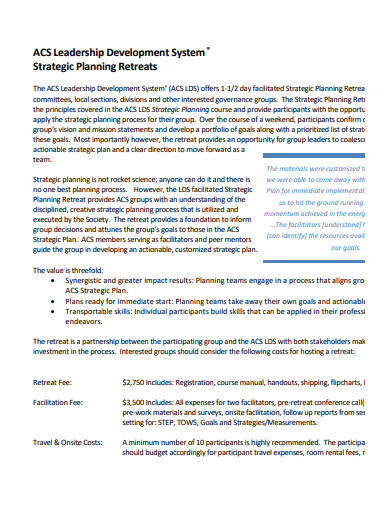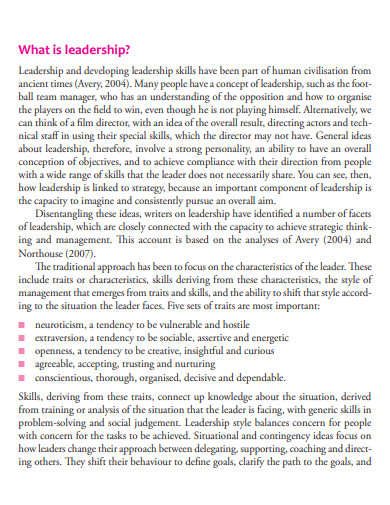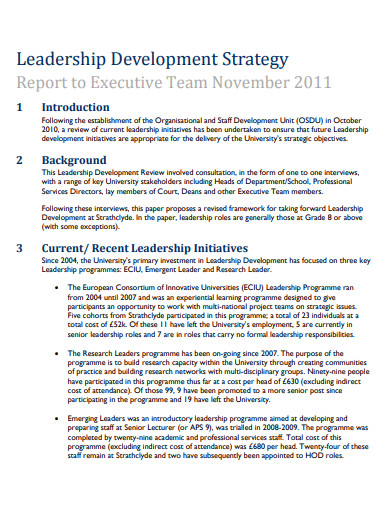Leadership development enhances the abilities of an individual to take on leadership roles and responsibilities. This covers a wide range of programs including from management, executive education, seminars, workshops, to internships. Opportunities brought by leadership development are often focused on developing knowledge, skills, self-awareness, and new abilities that are needed in order to lead effectively. Having a strong leadership within your company in the business and corporate space can ultimately make or break your organization. If your company is committed to developing a new set of leaders every time, then you can expect to have a significant competitive advantage in the industry that you are operating in. Attracting, developing and retaining talent, driving strategies, execution, and increasing your overall chances of success, especially when you want be always able to implement new and effective strategies.
Despite the importance of proper leadership development, there are still a lot of organizations who fall short on implementing this component. More often than not, there are still people who are appointed to leadership roles without any prior training or experience. The lack of proper leadership in and around your organization can be very detrimental in a lot of ways. For example, it can result to losses in productivity, high turnover rates, low team morale, and absenteeism.
That is why it is very important for different companies, businesses, and organizations to be able to come up with their own comprehensive leadership development plan. A document that can be incredibly useful in making sure that the company has a strong pipeline to produce good leaders and improve the ones that are currently in position. The growth and evolution of a company is directly proportional to the growth and development of its leaders. To create a solid leadership development plan means outlining the most detailed steps in order to identify and nurture the next generation of potential leaders within the company. Strategy implementation projects can be quite difficult to manage, and these tasks are not usually so easy for most organizations. Changes in management and the protocols can be quite difficult to digest and to get used to. That’s why you’ll need a solid leadership board behind the project. And well, a strategic leadership development plan can easily help you establish that.
Leadership is and will always be an important factor everywhere. Most especially if you are working with huge pool of human resources that you need to usher to the right direction. Now writing a leadership development plan may not be as easy as it may seem at first. So before you have any attempts at writing the document, be sure to check out these strategic leadership development plan samples first which we have listed for you down below. Once you are quite familiar with the document, with what it looks like and how it works, you can then freely use these samples as guides or even as templates for when you write your own strategic leadership development plan.
3+ Strategic Leadership Development Plan Samples
1. Strategic Leadership Development Plan

2. Sample Strategic Leadership Development Plan
3. Strategic Leadership Development Example
4. Basic Strategic Leadership Development
What Is a Strategic Leadership Development Plan?
A leadership development plan is a document dedicated to designing a plan to assist employees and potential leaders gain the necessary leadership competencies to prepare them for a promotion towards managerial roles within your company. A leadership development plan defines the different steps that you might need to take in order to become or build a better leader. It should include the list of different skills that you might need in order to improve, the responsibilities that you need to take on, and the tasks that you need to complete. Most leadership development plans work as agreements between the employer and the employee. For strategic leadership development plans, the benefits of the document extend beyond the confines of a single individual.
When leadership development is aligned with the strategies of your business, organizations such as yourselves will be able to link your own investments to support potential leaders in internal training programs or tuition reimbursements to expand your own goals. Efforts like these can lead to a larger likelihood of your leadership development plan being green lit by supervisors and the rest of the management. Overall, leadership development plans are critical for organizations who wish to continue operating moving forward even in times of crises and even when faced with competitive industries. A well drafted plan can bring a wide range of benefits for you and your company. For example, being able to keep the most valuable individuals of your company to continue working with you and to keep them from seeking alternative opportunities from competitors. Since there is no better environment that what you have within your organization. The better leaders you have, the greater potential your organization has to make a name for itself and remain viable in a constantly evolving market.
Elements of a Strategy Leadership Development Plan
Once you have identified your long term leadership goals and the qualities of a leader that you want to improve upon, you should now be able to develop your own leadership development plan. When developing a leadership development plan, you need to remember that some components may vary between all sorts of individuals. Other companies might have their own ways of writing it too. Some may use a spreadsheet, while others use a chart. Regardless of these nuances, there are still several elements that you need to remember and keep in mind to make sure that your leadership development plan is effective enough. These basic elements will be listed and discussed in more detail down below.
1. Core skills to master
Leaders may be exposed to a number of different responsibilities that are specific to the role that was assigned to them. It can include meetings, providing feedback, sharing information in front of an audience, and overall decision making. So the first thing that you need to remember and keep in mind when writing a leadership development plan is to identify the skills that you might need or those that are aligned with your own leadership goals. If you know someone else who work in the environment who has the skills that you want to master, you can try to ask them if you can shadow or practice with them when they work. If not, then you can try to look for external resources that can help you build and hone these skills.
2. Experience gaps to close
Aside from tactical and practical skills, there might also be some strategic responsibilities that a leader must take on including working on a new project, dealing with a project that is not working well, managing large scale ventures, and trying to deal with business operations in a crisis.
3. New relationships to build
As a leader, you need to be able to know how to interact with multiple stakeholders on a regular basis. Some are already operating within your company like department heads, front-line employees, and managers with other skills. While there are also other stakeholders who work outside of your organization, ranging from clients to suppliers, as well as board members from other businesses. When writing a leadership development plan, you need to be able to identify these entities preemptively, and decide which of them would you want to establish a stronger, mutually beneficial business relationship with.
4. Delegate specific tasks
Effective leaders should know how to weigh the balance between day-to-day tasks and long-term commitments when it comes to responsibilities. They should be able to know which task is more closely aligned with their own skills and which other tasks can they give to the rest of the team. List down the activities that work best with the skillset that you have, and those activities who can easily be completed by other members of your team.
5. Key action items to complete
The specifics of a leadership development plan should include the strengths and the potential areas of improvement of your candidates. For every area that you wish to work on and improve, you can include an action item and the timeframe in which you want the task to be complete. You can also include the cost of the resources needed in order to work on the tasks. Action items can be meetings with your managers, reading books on leadership, completing an assessment, or identifying training and educational opportunities.
6. Critical indicators of success
Leaders are often evaluated not only by their success, but also by the success of the team that they are handling. A leadership development plan should list the indicators for these successes. Indicators like;
- Improving the quality of work
- Improving teamwork and morale
- Increasing delegation of responsibility
- Strategic planning and preparation
- Continuous learning for you and your team
- Recognizing the contributions of the team
FAQs
What are the five SMART objectives?
- Specific
- Measurable
- Achievable
- Realistic
- Timed
What are the 7 leadership skills?
- Willingness to listen
- Perseverance
- Honesty
- Selflessness
- Decisiveness
- Trust
- Integrity
What are the five components of a leadership development plan?
- Coaching
- Accountability
- Change Management
- Influence and Negotiation
- Communication
A leadership development plan works best as a live document. Meaning that the document should be something that you revisit from time to time, more preferably on a regular basis, to make sure that you are properly addressing the areas of improvement that you have set for yourself.
Related Posts
FREE 9+ 30-Day Marketing Plan Samples in PDF | MS Word | Apple Pages | Google Docs
FREE 3+ Sales Team Action Plan Samples in PDF | MS Word | Apple Pages | Google Docs
Marketing Plan For Small Business Samples
FREE 7+ Fashion Business Plan Samples in PDF
FREE 10+ Sprint Planning Samples In MS Word | Google Docs | PDF
FREE 10+ Wedding Planning Samples in MS Word | Apple Pages | Powerpoint | PDF
FREE 9+ Monthly Study Planner Samples in PSD | Illustrator | InDesign | PDF
FREE 9+ Sample Curriculum Planning Templates in PDF | MS Word
FREE 10+ Teacher Development Plan Samples in MS Word | Google Docs | Apple Pages | PDF
FREE 10+ Basketball Practice Plan Samples in PDF
FREE 12+ School Business Plan Samples in PDF | MS Word | Apple Pages | Google Docs
FREE 7+ Client Strategic Plan Samples in PDF | MS Word
FREE 11+ Trucking Business Plan Templates in PDF | MS Word | Google Docs | Pages
FREE 7+ Small Hotel Business Plan Samples PDF | MS Word | Apple Pages | Google Docs
FREE 14+ Bakery Business Plans in MS Word | PDF | Google Docs | Pages



